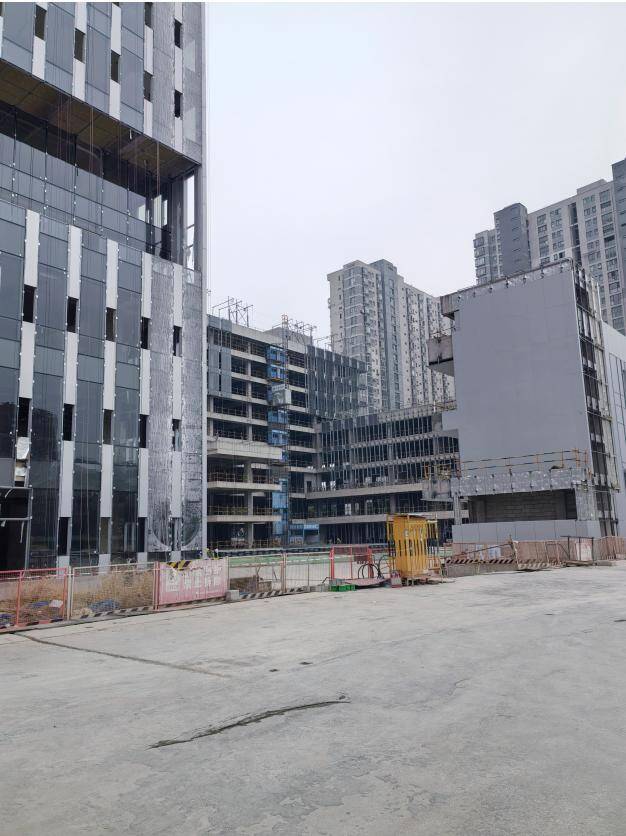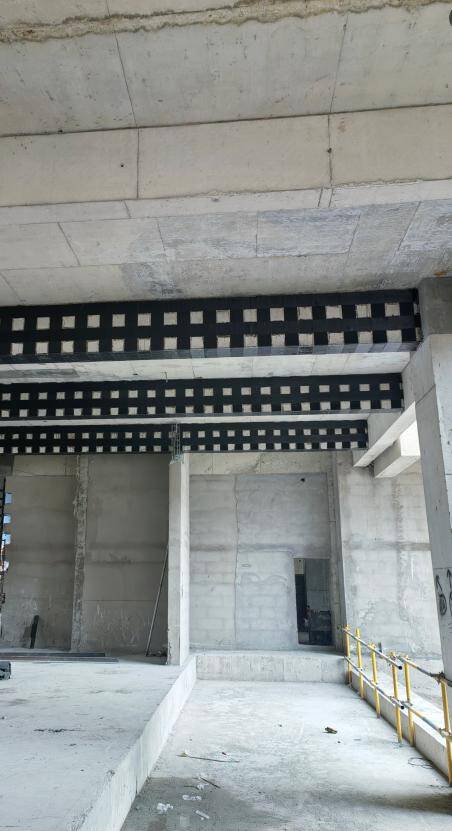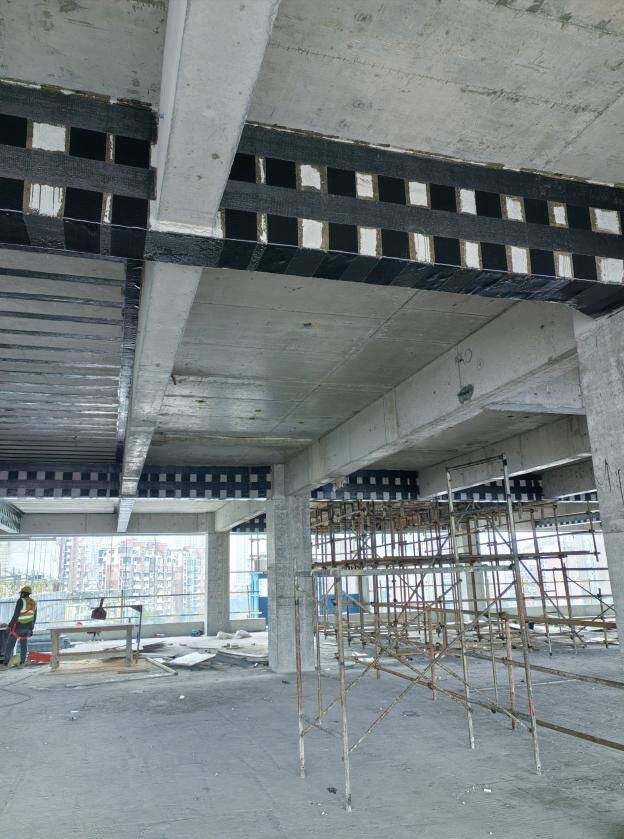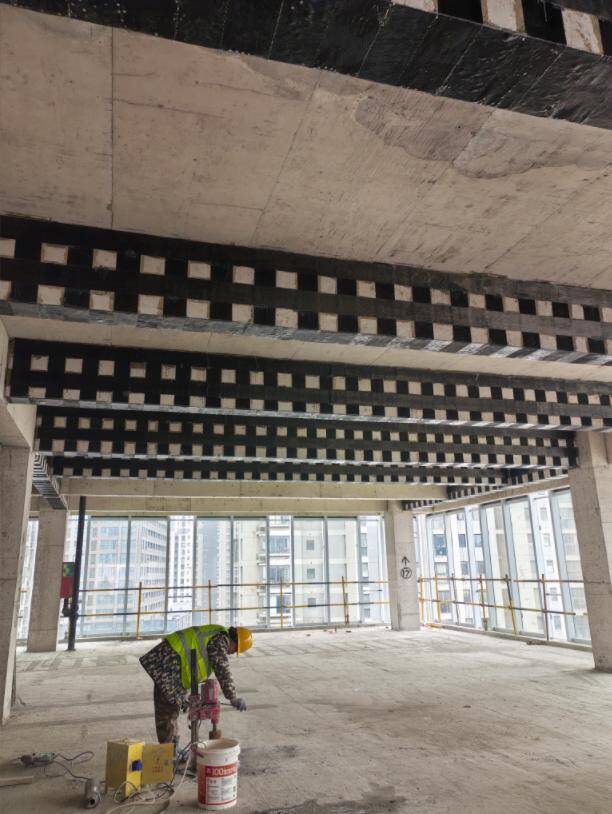New Building Need Strengthening?
Poor Concrete
After the completion of the carbon fiber reinforcement and the concrete strength had increased significantly, approaching the design requirement of C35.

In the construction process of a new commercial building, a serious quality problem occurred during the concrete casting of beams. The designed concrete strength grade for the beams was C35, which was specified to ensure the structural integrity and load - bearing capacity of the building. However, upon completion of the casting and subsequent strength testing, it was found that the actual concrete strength of the beams only reached approximately C25, far below the design requirement. In addition to the strength deficiency, the surface of the beams exhibited a series of visible defects, including honeycombs, pitting, and voids. These issues significantly weakened the overall performance of the beams and posed a potential threat to the safety and durability of the entire building structure.
The causes of these quality problems were multi - faceted.
Firstly, during the concrete mixing process, there were inaccuracies in the measurement of raw materials. The proportion of cement was insufficient, and the amount of water was excessive, which directly affected the hydration reaction and ultimately led to low concrete strength.
Secondly, the vibration operation during concrete casting was not carried out properly. Inadequate vibration failed to expel the air bubbles in the concrete, resulting in the formation of honeycombs and voids on the surface and inside of the beams. The presence of pitting was mainly due to the poor quality of the formwork surface, which did not provide a smooth contact surface for the concrete.

Solution: Carbon fiber
Considering the severity of the defects and the requirements for strengthening the beam structure, carbon fiber reinforcement technology was selected as the most suitable solution. Carbon fiber reinforcement has several advantages in this context. It can effectively enhance the surface hardness of the beams, providing better resistance to mechanical abrasion and impact. By bonding carbon fiber sheets to the surface of the beams, the overall integrity of the beams can be improved. The high - strength carbon fiber material can collaborate with the original concrete structure, significantly increasing the load - bearing capacity of the beams and enabling them to withstand the design loads.

Moreover, the carbon fiber sheets can act as a barrier, providing a certain degree of sealing for the internal defects of the concrete. This helps to prevent the intrusion of moisture and harmful media, such as chloride ions and sulfur - containing compounds. These substances can cause corrosion of the embedded steel bars and deterioration of the concrete, and the carbon fiber reinforcement plays a crucial role in protecting the long - term structural performance of the beams.
Project video
https://www.youtube.com/shorts/3wYs5vp76rU

After the completion of the carbon fiber reinforcement and sufficient curing time, a series of tests were conducted to evaluate the reinforcement effect. Compressive strength tests on core samples drilled from the beams showed that the concrete strength had increased significantly, approaching the design requirement of C35. Flexural and shear load - bearing tests demonstrated that the load - bearing capacity of the beams had been enhanced by more than 30% compared to the pre - reinforcement state.
In addition, visual inspection and moisture - penetration tests indicated that the carbon fiber reinforcement had effectively sealed the surface defects and improved the durability of the beams, providing a reliable solution for the quality - defective beams in this new - construction building.